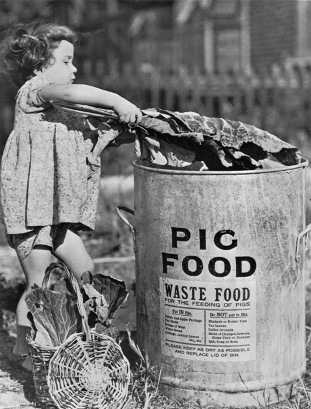How is the flavour of my food influenced by the flavour of its food. Why do producers make such an effort to tell us how, where and what their animals eat? Why the goat tree? You may well ask…
At the Specialty and Fine Food Fair in Kensington this month I learned some key differences between Jamón Ibérico and Prosciutto di Parma. What I learned did not come from the leaflets extolling the virtues of the Spanish acorns – “bellota” , the climate and the Black Iberian Pig. Nor did it come from the flamenco-clad promoter helpfully reiterating the very same information. No, what I learned was that Iberian ham is not the same as that from Parma – it tastes different. To me it was sweeter, less salty and has a much more subtle flavour. It is traditionally carved by hand in shorter, slightly thicker slices. I also expect that the particular distribution of fat throughout the meat has an impact on the texture and tenderness. It is clear that even at this most basic level, all of these characteristics make it suitable for different uses and palettes than its Italian cousin.
Does it matter which of these characteristics, are down to the diet of acorns vs. parmesan whey and which are due to the climate, breed (and genetics), production methods, cut of meat or age? Not really. Without too much research I can understand how volcanic soil might suit nebbiolo vines or Moroccan tree climbing goats might prefer the fruit from argan trees. This natural diversity and competition creates specialisation essential for survival. Clearly different species, varieties and breeds survive in different environments and with different diets.
Whilst I would usually applaud cautious scepticism towards marketing messages generally, we need to distinguish between too much misleading information and too few relevant facts. Attempts at transparency can often leave us overwhelmed and confused. Promoters of salt marsh lamb tell us that the marshes provide unique salt-tolerant grasses and herbs such as samphire, sea lavender and sparta grass, depending on the specific geography. Great, I love my lamb to taste of salty seaweed. You can see their quandary. The darker meat and delicate sweet flavour has to be experienced even if it is repackaged as “pré-salé”. Equally relevant to many is that there are less parasites like ticks, flukes and worms who don’t like a brine bath twice daily and no fertiliser is used on marshland. So they have what many would deem an important organic/health message too. Does the lack of fertiliser and vet bills make this especially tasty lamb cheaper I wonder? I imagine the acreage of farmable salt marsh prohibits equality in pricing – shame.
We can’t underestimate the power of romantic imagery conjured up by soft focus and authentic language. I know I prefer the taste and texture of “finnochiona di cinta sinese” as opposed to “rare breed italian pork and fennel salami”. Perhaps they’re doing us all a favour. By creating unique selling points, exclusivity and perceived quality, actually all they are doing is enhancing our own experience by carefully raising expectations. By protecting us from the reality of pig farming, slaughter, butchery and salami making and presenting us with images of free ranging pigs and wild fennel, they allow us to innocently enjoy our food whilst supporting small enterprise, animal welfare and the environment at the same time.
Using words alone to impart a little enthusiasm about a product is a huge challenge. It’s a fine line between giving enough useful information to make an informed decision and seeming to cloak low quality produce in high-end schpeil. This is difficult when dealing in print, slightly easier when you can look your audience in the eye and very easy when they can taste what you’re talking about. Once it was rare to be able to compare the taste of similar products at the point of purchase. This is becoming easier now as supermarkets and delicatessens stock wider ranges. Increasingly common are food markets and festivals also allowing direct comparisons between different suppliers. Meeting the producers directly in this way means we can even choose the one with the cleanest hands if that’s what’s important to us.


Discussion
No comments yet.